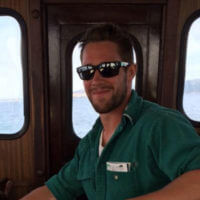University of Alaska Anchorage – B.A. English
Pacific halibut growth has decreased coast-wide since the late 1970s and early 1980s. This decrease in individual size-at-age has resulted in declines of observed stock biomass, relative to historical biomass averages. In all International Pacific Halibut Commission (IPHC) management areas, harvest levels and apportionments are determined using IPHC setline surveys that produce information on the observed distribution of fish >32 inches (minimum commercial retention size limit) and catch rates. The lower observed biomass of halibut, and the associated lower female spawning biomass, has resulted in decreases in the harvest levels of target and non-target halibut fisheries. The driving mechanisms behind decreasing size-at-age are not yet fully understood, and many of the relationships between them have yet to be explored. Further, while declines in mean size-at-age are well established, work remains to be done on the spatiotemporal aspects of these declines. This project’s objectives are 1) to describe the spatiotemporal distribution of halibut size-at-age in IPHC Area 3A, and to model the spatial structure of halibut growth performance (length-at-age) using geo-statistics; 2) determine the presence/absence of consistent spatiotemporal anomalies in growth performance above or below the Area 3A intra-cohort year-over-year mean size-at-age values; and 3) to explore the relationships between Pacific Halibut size-at-age and halibut diet through a method of stable isotope ratio analysis using δ 13C, δ15N, and to study the possibility of spatial variability in diet and diet tropism.
Funding for this work is provided by the Pollock Conservation Cooperative and the Groundfish Forum via the Alaska Education Tax Credit Program.
I was born and raised in Homer, Alaska where fishing and nautical work in general are a big part of life. That said, I am definitely a product of my upbringing. As soon as I was old enough to get my Merchant Mariner’s Credential, I did, and started working aboard pilot boats in Prince William Sound and Cook Inlet. I learned as quickly as I could, and I managed to obtain my USCG Master’s License when I was 21. In between work seasons, I studied at the University of North Dakota. It was during my undergrad that I realized Alaska was really home, and that working on the ocean was for me. In 2015 I changed gears and began captaining charter fishing vessels, starting my own company out of Homer. During that time, I was also lucky enough to join the FAST Lab at APU. For me the lab represented a new way to learn about the ocean, and about the interactions it has with fishermen and fisheries management. As a born and raised Alaskan these interactions are important to me, and I have been thankful for the opportunity to learn in new ways.
My Thesis at the FAST Lab is on Pacific halibut spatial dynamics and size-at-age in the Gulf of Alaska. Observations of halibut populations have shown mean declines in growth performance, and these declines have had negative effects on halibut fisheries across the state. Understanding of the declines has been limited by a lack spatial and temporal study. My project addresses this with a formal spatiotemporal analysis of the declines in IPHC Area 3A (between Sitkinak and Cape Spencer). The project also involves a spatial analysis of diet across 3A, using stable isotopes as indicators of tropism and source. This allows us a look at differences in diet both between different areas, and between fish with dramatically different growth trajectories.

